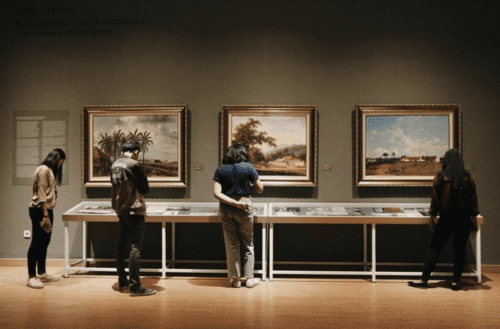Vipre Antivirus from Sunbelt Review
VIPRE Antivirus software can meet all of your computer needs.

For those who don’t know much about art or feel they don’t have a creative bone in their body, having a strong artistic sense might seem like a divine gift that only a select few have been blessed with by the art gods. In reality, creativity, imagination, and artistic taste are skills we all possess to some degree. While it’s true that certain individuals are more inclined towards the arts than others, both in terms of creating and appreciating it, this is certainly not an innate quality or a mysterious superpower that only chosen ones can wield.
Not everyone can become a successful artist, but artistic taste can be trained, just like a muscle. So, even if you’re not an art expert or you have never held a paintbrush in your hand, you can still develop an eye for good art and learn how to recognize and appreciate valuable artworks. With time and patience, you can go from clueless to connoisseur, and even turn your house into a veritable art gallery.
This question is as old as time, or at least as old as art itself. Back in the day, when art was mostly representational, making the distinction between good and bad pieces was much easier. Artists had to conform to certain norms, so the quality of their work was judged by how well they followed and applied those principles.
However, things have changed in the artistic realm since then. Differentiating between valuable pieces and mediocre or terrible ones has become much more complicated, with art moving away from its early conventions and new artistic trends and currents emerging, challenging people’s perceptions.
As a form of creative expression, art is complex, diverse, limitless, thought-provoking, and, above all, subjective; it doesn’t follow a strict set of rules, it’s not subject to measurement, and cannot be confined within rigid boundaries. Some might argue there is no such thing as good or bad artwork. There’s just art and the numerous interpretations and viewpoints it elicits. This theory implies that all art is somewhat equal and all artists are just as deserving, which would be rather unfair and unrealistic.
Beyond the endless philosophical debate on the matter, there are ways to determine the merit and artistic quality of the pieces you’re looking at. So, if you don’t want to waste your time on worthless items, here are a few aspects to focus on, whether you’re searching for paintings for sale online or in physical galleries, or hunting for vintage art at thrift stores and garage sales.
When analyzing an artwork, you should probably start by deciphering the features that make it stand out and cause you to find it appealing. You’ll find yourself instinctively drawn to certain art pieces, and even though the magnetism can be difficult to explain or put into words, you can figure out what triggers this emotional response by focusing on the composition, namely on how the artist has used and combined different elements to bring their vision to life.
Pay attention to the colors, lines, shapes, and textures, and how all these ingredients interact with each other and come together to convey a message. Proportions, placement, and balance are also important aspects to take into account.
The quality of an art price also hinges on the technical skills of the artist and the methods they employ during the creation process. These are best observed in the structural lines of the composition, the proportions, the symmetry, or lack thereof, the brush strokes in paintings, as well as the media and materials from which the piece of art is made. Mistakes and technical defects are easy to spot if you look closely enough and they can be quite telling of a piece’s value.
Good art is also unique and inimitable. Its value stems from the ability to provide something new and singular. Even if some may try to copy a piece of art, the original will always shine brighter through its authenticity and the creative work poured into crafting it.
Most importantly, art is not just what you see as its power and worth go much deeper than aesthetic appeal. The true essence of an artwork lies in its meaning and purpose. The message or story that the artist is trying to communicate to the world and how well they manage to do that is the main focus of any form of art.
In the end, all the above-mentioned qualities are subject to individual interpretation, so your personal reaction and opinion on an art piece after analyzing it with a critical eye is what matters the most.
Knowing what to look at when examining a work of art won’t automatically make you art-savvy, but the following tips might help:
We hope you’ll find these tips helpful as you continue your pursuit of artistic knowledge and literacy. There’s a whole world of art out there, so feel free to explore, experiment, and enjoy it.